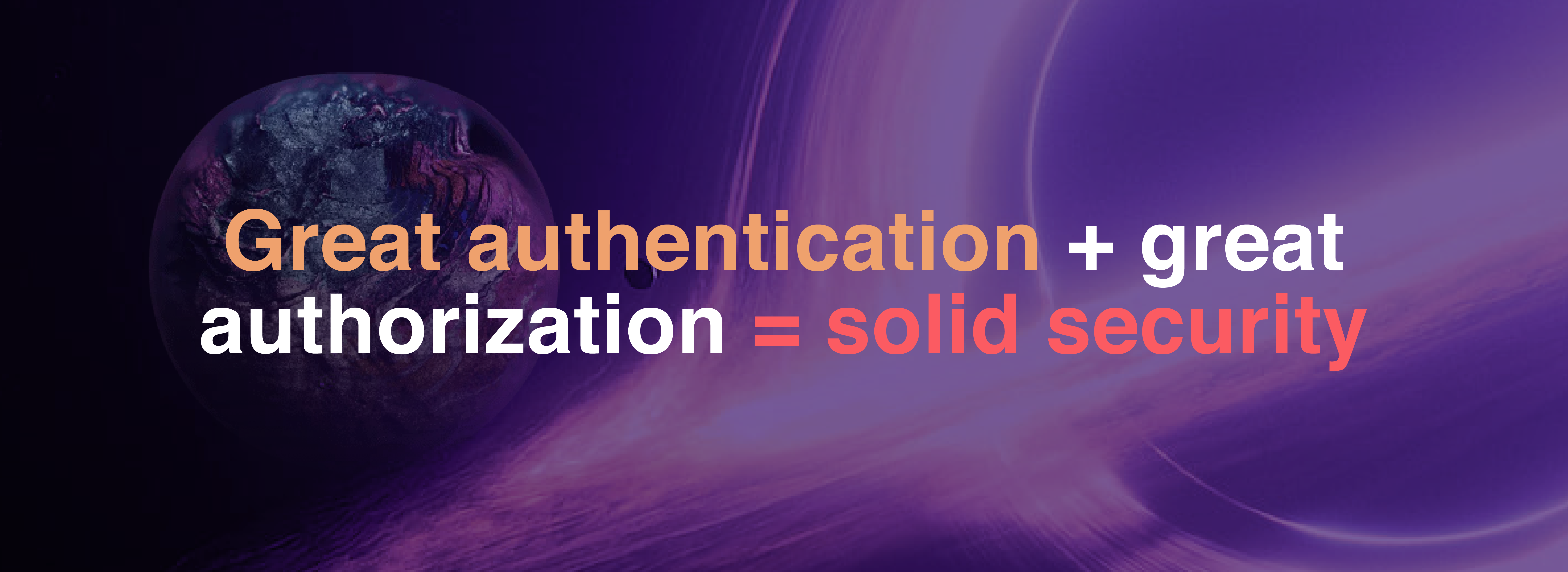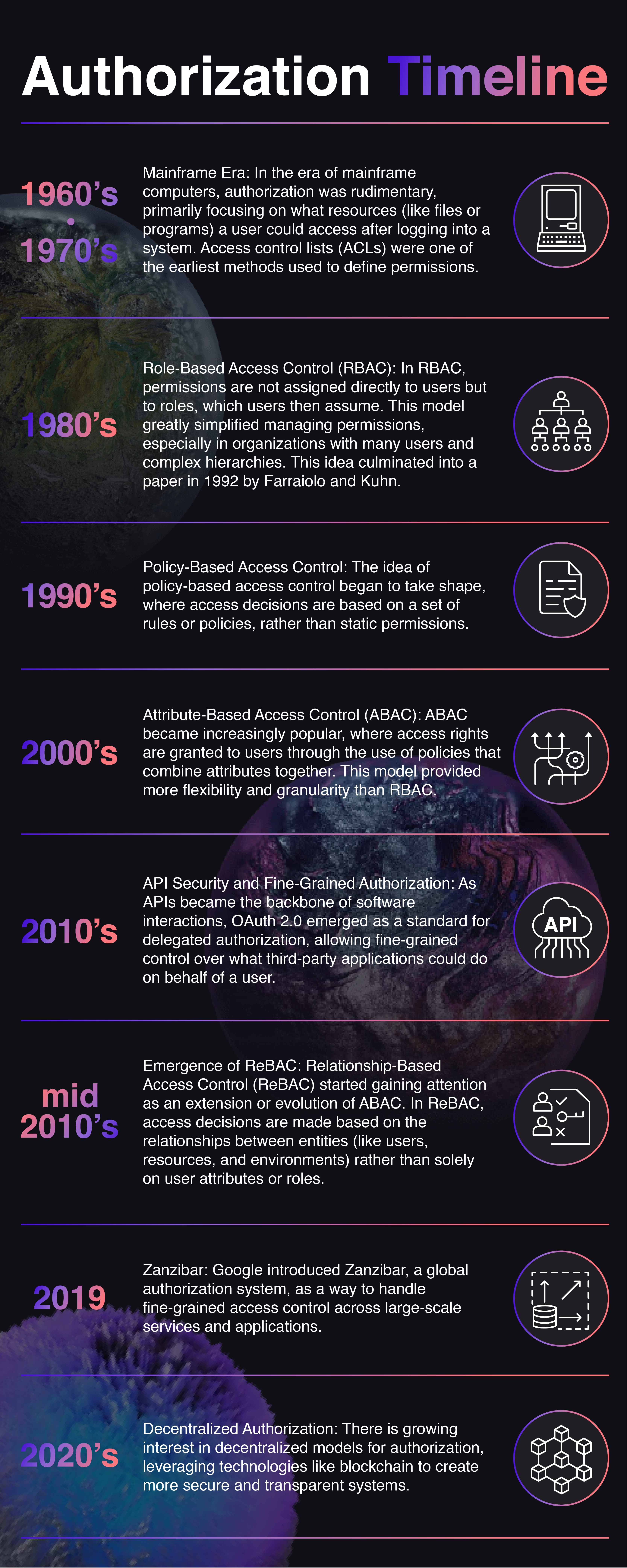How two foundations of secure access have evolved and where they’re headed.
Authn vs Authz, a primer
Imagine you want to go on a trip to another country. Among the essentials you’ll need are a passport and a visa. Your passport tells another country who you are and gives them the information they need to uniquely identify you. A visa, on the other hand, gives you permission to enter the country you’re visiting.
No, you haven’t mistakenly visited a travel blog – this analogy is useful when it comes to talking about the differences between authentication and authorization, two key principles of securing our possessions (and our information) that date back 6,000 years to when locks were invented. Put simply, authentication is the passport, and authorization is the visa. To break it down more technically, authentication is the way an entity verifies someone is who they say they are. Authorization, then, allows access to an asset once a person’s identity has been verified.
Let’s look at an example in computing. Users of a highly used app may be verified and authorized billions of times per day. And, if it’s done right, you probably don’t even think about it. Authentication happens after you’ve provided an app with something that verifies your identity, and authorization relies on the app to understand your relationship to the resources it can grant access to:

Authentication and authorization work together so seamlessly in the real world, that it’s easy to understand why they get confused so OFTEN – I mean, the words even share a common root, “auth” (from the Greek word for “self”). And you really can’t have one without the other:

Authentication
The three principles of authentication
To take this beyond the app example above, authentication in computing means verifying three different types of entities: user, process, or machine. To authenticate a user, we can use one or a combination of three key factors:
- Knowledge: Something a person knows – i.e. a password/username, a passcode or PIN, or a security question
- Ownership: Physical token or something a person owns – i.e. a Yubikey, hardware capable of an encrypted handshake (like ACME for Apple devices), or Google Authenticator
- Inherence: A vital piece of something a user is or does – i.e. biometrics or keystrokes. (These might be more familiar to you in how they translate into real-word use: Voice recognition and fingerprint identification are good examples.)
Whenever you sign into social media, your email, or any Web-based application, you are using authentication to prove you are who you say you are.
The history of authentication
Authentication started in the 1960’s (60 years ago!) with the first passwords in databases. From there it moved to passwords with a hash, and eventually, encryption. Modern encryption has been around since the 1970’s with RSA asymmetric encryption. Today, we have complex authentication technologies that include multi-factor authentication, password managers, and web authentication, which have become a daily part of users’ experience across the internet.
Timeline of authentication milestones

[Timeline is based on an excellent piece - “Digital authentication: The past, present and uncertain future of the keys to online identity” on GeekWire, with a few new additions by the authors]
We don’t know where “the passport” of authentication will take us in the future but as technology continues to advance, the ability to identify an individual user will get more complicated. This rings true for all Web applications and services, but even more so for highly secure or zero trust environments such as government platforms and healthcare data. These platforms, coincidentally, also require accurate authorization technology that gets users what they need, when they need it, in an efficient way. Enter Authorization, a.k.a. the visa.
Authorization
As our digital footprint has grown, experts have developed new access control and permissions management models to meet the needs of feature hungry teams. Since the advent of the original Access Control List Model (ACL) in the 1960s – similar to an “invite only” guest list – we have designed increasingly abstract authorization systems.
In computing, authorization is when one entity grants permission to another entity to engage with a resource within a set of boundaries. Authorization has become increasingly difficult for application developers, often causing performance issues when deployed at scale and blocking feature development.
Timeline of authorization milestones

Today, online experiences are ubiquitous and plentiful, and collaboration can take place just about anywhere and anytime, using any number of tools. That means that authorization needs to advance quickly to keep up with all of the ways that people are collaborating online together around the world. Moving forward, interest will likely trend toward dynamic, context-aware systems that can adjust permissions in real time. The exploration of decentralized models for authorization that integrate concepts from ReBAC and systems like Zanzibar suggests a future with more secure, efficient, and flexible access control mechanisms.
| Authentication (authn) | Authorization (authz) |
|---|---|
| Verifying user identity | Determining user permissions (the level of access to a resource) |
| Passwords, 2FA, Multi-factor authentication, Captcha, Biometrics | Role-based Access Control (RBAC), Attribute-based Access Control (ABAC), Relationship-based Access Control (ReBAC) |
| Dex, LDAP, AD, Ping, Okta | SpiceDB, Google Zanzibar, OPA, authZ libraries |
As technology develops, so will both authentication and authorization. We at AuthZed are excited to be on the forefront of the authorization space, bringing concepts from Google’s Zanzibar to the masses with SpiceDB.
SpiceDB is a database for your applications permissions that combines the two things that have traditionally been incongruous: flexible authorization modeling and scalable, high performance. It can unlock product features and usage growth that was not previously possible because it allows your product to incorporate complex permissions while also accommodating high usage.
You can try modeling a permissions system here and get started with fine-grained access control across all of your environments and applications.
To explore more about SpiceDB, checkout these resources:


